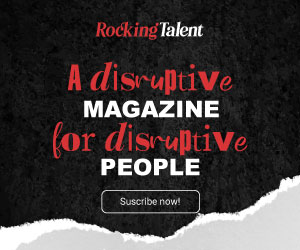According to Alexander Bant, Practice VP, Chief of Research-Finance at Gartner, spending trends in 2021 will shift significantly. “Human Resources” is targeted for cutbacks; investments will be redirected to the IT departments. “Seven out of 10 board directors say the COVID-19 impact has already accelerated digital business initiatives.”i
While this may seem on its face to be bad news for HR… wait a minute. During the pandemic, HR professionals learned how effectively to use technologies and improvise/create new solutions to accommodate the virtual workplace. We tried ground-breaking applications, working successfully and efficiently online ourselves. Then we demonstrated to our employees how to learn, communicate, work, hire, etc., while telecommuting. We are smart, resilient, and innovative. Looking back over the last year, we rocked. Now, moving forward how do we keep that momentum?
Consider what worked and what didn’t work. Debrief with colleagues in an honest exchange. Address areas such as communication, worklife balance, benefits, training, employee development, collaboration, health and wellness, hiring, exiting and how they were handled using technology. Identify the technologies that you relied upon and those you wish you had.
Identify our technology needs now. Then we must initiate HR technology investments by working with those who control the purse strings. As leaders and business partners, we know what our internal customers need. Now is the time to speak up for the proper HR technology investments that will capitalize on and maintain our innovations and momentum as we pull out of the COVID-19 pandemic. We must influence investments and more importantly, justify them. The reasoning behind our recommendations must align with an overarching, HR technology strategy. If there is no clear strategy for HR technology use, step up and participate in its design.
Design an HR Technology Strategy. Given what you have learned about the virtual workplace and the functions of HR, design a strategy that is HR friendly. By that I mean it does not have to be technology centric, rather it should be employee focused. The strategy should address the following three intersecting and overlapping HR domains: Talent Management, Learning Management, and Knowledge Management. The technology strategy for handling functions within these domains should use cloud computing, leverage social media, be mobile accessible, rely on machine learning/IOT/AI, and effectively collect data for analysis and decision making. A visual of this strategy appears below. Practical implications described in the book Digital HR (Waddill, 2018).ii
Answer the questions about current technologies used for HR purposes. What technologies are used by your organization for Talent, Learning, and Knowledge management? This is your starting point. In large organizations, you may find that one Human Resource Management/ HCM/ Talent Management System is used for all three domains as is true for the telecommunication corporation case study, as described in The e-HR Advantage.iii In smaller organizations, however, you may have a constellation of systems that perform a variety of different HR functions. These should be integrated systems. A strategy that incorporates current technologies to accomplish HR functions information sharing for data analytics and decision making. Whether a Fortune 500 or a small, startup firm, the HR strategy should allow for these domains to interconnect and support each other. An example of this strategic design in action is Pindel Global Precision in New Berlin, Wisconsin.
Learn from other HR Technology strategy examples, e.g., Pindel Global Precision
Recently, I interviewed Bill Berrien, CEO of Pindel Global Precision to understand how they survived and are thrived in spite of the pandemic. Given the reality that about “42% of small business owners reported job openings they could not fill, a record which is 20 points higher “than the 48-year historical average”iv, Bill decided to pursue a policy of upskilling and reskilling his existing workforce. He used his existing technology strategy to pivot from hiring to upskilling.
When COVID-19 hit, requests for custom machined products fell drastically. The cash flow dropped, and Bill moved to an employee development paradigm. From a business model perspective, Pindel Global Precision realigned excess capacity into the business of making ventilator parts which provided cashflow. Bill made a commitment to his people to keep everyone employed. Since there was some employee downtime, Bill began a new initiative to upskill his workers. Using the talent management system which contained a record of employee skill sets and affinities, employees learned new skills such as software programming to program the high-tech machinery on site or quality training and AS9100 aerospace certification. Once certified, Bill had the programmers reprogram machines for custom work. Those with AS9100 training participated in the launch of a wholly owned subsidiary within Pindel call Liberty Precision to pursue the aerospace. The knowledge management approach to training resulted in a curated, stored, and shared set of knowledge assets in the form of videos, pre-programmed instruction, and online courses. Classes and resources were accessed through the Internet at locations within the workplace using the organization’s learning management system.
Clearly, having a technology strategy provides a clear advantage. Leveraging talent, learning, and knowledge management in alignment with the organization’s mission offers new and innovative possibilities. HR professionals can lead the way.





